Family Clupeidae | Phylum Chordata Genus Alosa Rank Species | |
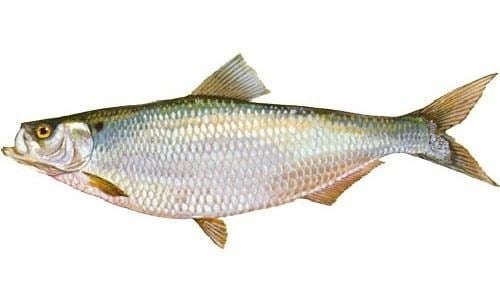 | ||
Similar American shad, Blueback herring, Alosa, Alewife, White perch | ||
Kayak fishing for catfish and hickory shad
Hickory shad (Alosa mediocris) is a member of the herring family Clupeidae, ranging along the East Coast of the United States from Florida to the Gulf of Maine. It is an anadromous fish species, meaning that it spawns in freshwater portions of rivers but spends most of its life at sea. It is subject to fishing, both historic and current, but it is often confused with or simply grouped together with catch statistics for American shad (Alosa sapidissima).
Contents
- Kayak fishing for catfish and hickory shad
- Fly fishing for shad where to find hickory shad
- Distribution habitat and life history
- Recreational fishery
- Literature
- References
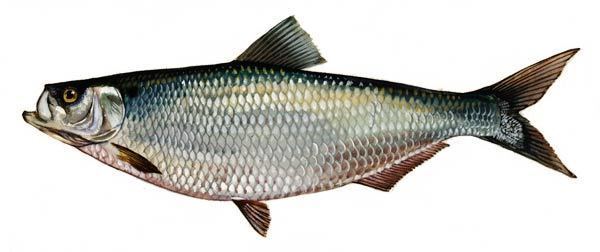
Fly fishing for shad where to find hickory shad
Distribution, habitat, and life history
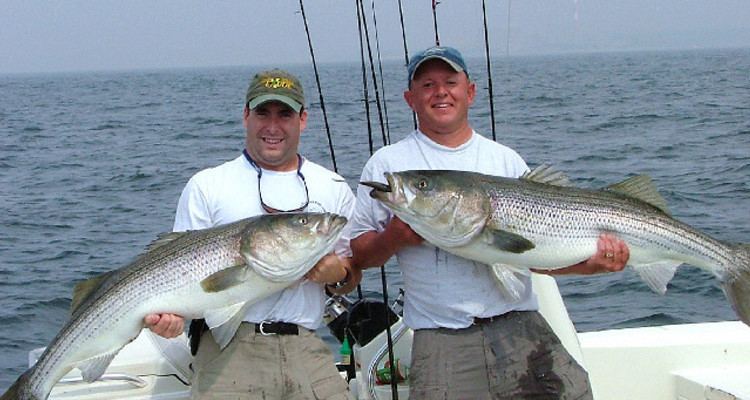
Hickory shad ranges from northern Florida to the Gulf of Maine. The largest populations occur in Chesapeake Bay and coastal North Carolina (Munroe 2002). It is a schooling anadromous species that inhabits marine waters, probably never far from land. Adults enter estuaries and freshwater tributaries from the St. John's River, Florida, to the Patuxent River, Maryland,to spawn during the spring. Their oceanic movements are poorly documented (Hardy 1978; Cooper 1983; Rulifson 1994).
Spawning occurs from December to June, earliest in Florida and later with increasing latitude (Hardy 1978; Harris et al. 2007). The slightly adhesive and demersal eggs, approximately 1 mm in diameter, appear to be dispersed at random over gravel bars in moderate current. After water hardening, the eggs become semi-buoyant and develop as they drift along the bottom (Mansueti 1962; Hardy 1978; Cooper 1983). Fecundity ranges from 43,000 – 475,000 eggs per female, and, although the developmental stages of eggs, larvae, and juveniles have been described, little is known concerning the distribution, ecology, and growth rates of these early life stages (Mansueti 1962; Hardy 1978).
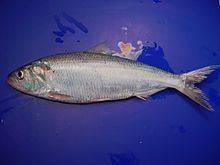
Hickory shad live to seven years (Harris et al. 2007). Both sexes mature at 2–4 years and can repeat spawn. Females are larger than males; in Florida, the average female is 37 cm fork length and the average male is 34 cm fork length (Harris et al. 2007).
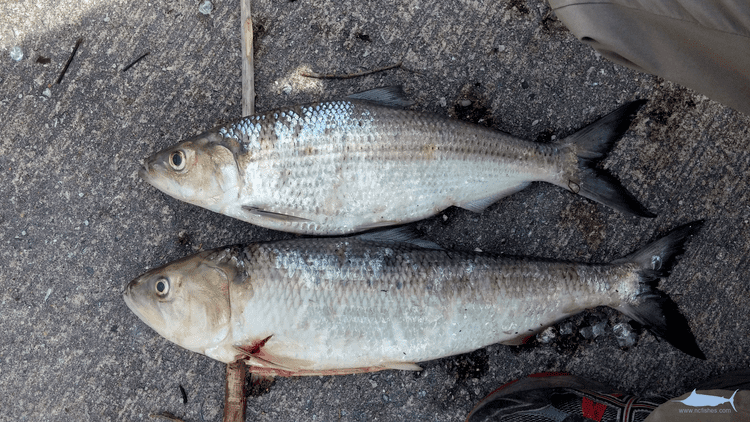
Hickory shad are piscivorous, feeding primarily on small fishes, although crustaceans and squid contribute to their diet (Cooper 1983; Munroe 2002). One study showed that their diet on the spawning grounds was almost exclusively fish (97% by weight; Harris et al. 2007).
Recreational fishery
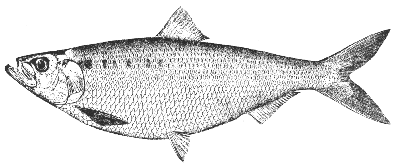
Hickory shad have a relatively low commercial value; however, there is an increasingly popular recreational fishery throughout the mid-Atlantic states. By the late 1980s and early 1990s, hickory shad articles appeared in sport fishing magazines. Headlines such as “the tough fighting hickory shad swarm near the rock-studded fall line…” (Sports Afield 1988), and “feast on Rappahannock River hickory shad action” (Field & Stream 1992) brought attention to the fishery. Subsequently, specialty magazines (Fly Fisherman 2002) and sports sections in national newspapers (i.e., The Washington Post, 1988, 2000) began proclaiming the excitement of hickory shad fishing (“HICKORY SHAD ARE RUNNING!”) and the recovery of the fishery. In the two most recent years of a North Carolina creel survey (2004-2005), hickory shad – a fish only present for two months of the year – moved from sixth to the fourth most targeted fish by coastal anglers (Murauskas and Mumford 2006).
Literature
Most information about this species is contained in federal and state documents and management plans or theses from universities. Federal publications include reports from the Atlantic States Marine Fisheries Commission’s (ASMFC) Interstate Fishery Management Plan for Shad and River Herring (ASMFC 1999; ASMFC 2001). Prominent publications by state agencies include reports based on fishery monitoring programs in Connecticut (Gephard and McMenemy 2004), Pennsylvania, Maryland (Chesapeake Bay Agreement 2000), North Carolina (NCDMF and NCWRC 2004), South Carolina, Georgia (Street and Adams 1969; Street 1969; Ulrich et al. 1979), and Florida (McBride 2000; Harris and McBride 2004; Harris et al. 2007; McBride and Holder 2008; McBride and Matheson 2011). A few publications address coast-wide and/or genus-level stock status and management issues (Rulifson 1994; Yako et al. 2002). The U.S. Fish and Wildlife Service published a useful series that includes egg, larvae, and juvenile development descriptions of hickory shad (Hardy 1978). A recent review of hickory shad in Chesapeake Bay places management of this species in an ecosystem context (Alosine Species Team, 2011). Three Master of Science theses include: Pate, 1972 (North Carolina State University), Batsavage, 1997 (East Carolina University), and Watkinson, 2004 (Virginia Commonwealth University).
Although hickory shad research has been limited, other clupeids, especially Alosa species in the United States, have received more attention (e.g., Limburg and Waldman 2003). American shad (A. sapidissima), which overlaps in distribution with hickory shad, has been frequently studied (Atkinson 1951; Dodson and Dohse 1984; Melvin et al. 1986; Quinn and Adams 1996; Leonard and McCormick 1999a, 1999b; Leonard et al. 1999; Waters et al. 2000; Limburg and Waldman 2003; McBride and Matheson 2011).
